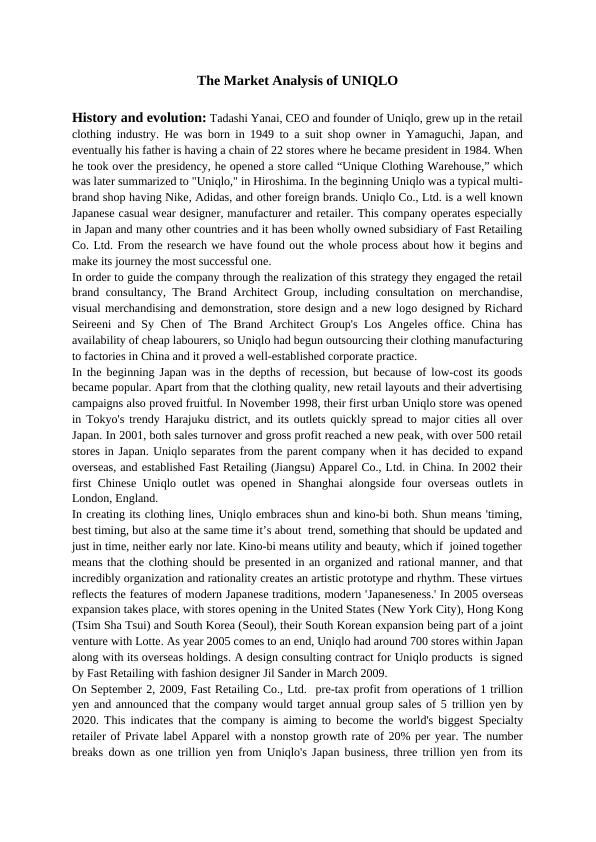Market Analysis of UNIQLO
Analyse the market structure of a specific industry within an organization.
3 Pages1422 Words179 Views
Added on 2023-06-12
About This Document
This article provides a detailed analysis of UNIQLO, including its history and evolution, challenges and solutions, company goals, future challenges, and the number of UNIQLO stores worldwide. UNIQLO is a well-known Japanese casual wear designer, manufacturer, and retailer that operates in Japan and many other countries. The company aims to become the world's biggest specialty retailer of private label apparel with a nonstop growth rate of 20% per year. However, the company still faces major challenges as it aims to achieve its 2020 goal, especially in the North American market.
Market Analysis of UNIQLO
Analyse the market structure of a specific industry within an organization.
Added on 2023-06-12
ShareRelated Documents
End of preview
Want to access all the pages? Upload your documents or become a member.
BX3082 - International Marketing
|6
|1525
|823
An Analysis Of The Culture Of UNIQLO - Desklib
|15
|4376
|1422
Supply chain management : uniqlo PDF
|14
|2942
|329
Uniqlo Marketing Plan - PDF
|13
|2565
|130
200621 - International Human Resource Management UNIQLO
|9
|2636
|1512
Management of Companies with Unrelated Diversification
|7
|2581
|585

